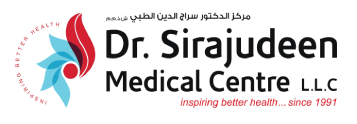What is Gum Disease?
Gum disease (often called periodontal disease) is a common bacterial infection of the tissues that support your teeth. It might occur when brushing isn’t done regularly or by not using dental floss. This will allow plaque (sticky bacteria) to grow and build up on your teeth. The initial stage of this disease ( gingivitis ), is when your gums may appear red, swollen, and can even bleed. If it goes unnoticed and untreated, periodontitis may result where your gums shrink from the teeth in which case they can weaken or even fall out.
Symptoms of Gum Disease
Early detection of symptoms allows you to prevent disease progression and explore the best treatment options available. Look out for these signs to identify gum disease in its initial stages:
- Red or Swollen Gums: Gums must be pink and look firm. If your gums are looking inflamed and more red than usual or feels soft, it could be gingivitis.
- Bleeding Gums: If you suffer from frequent bleeding gums every time you brush or floss your teeth, those are the warning signs of gingivitis.
- Bad Breath: A variety of symptoms are related to a bad and smelly mouth that is caused by bacterial buildup or tartar.
- Receding Gums: If your gums are slowly moving away from your teeth, it can create empty spots for bacterial growth, which can lead to more serious issues.
- Loose Teeth: The bones and tissues can be eaten away as gum disease progresses, causing them to become loose and then fall off.
How to Prevent Gum Disease
You can prevent gum disease if you maintain good oral hygiene and make healthy lifestyle choices. Here are some tips to prevent this disease:
- Brush Regularly:You should brush your teeth at least twice a day for two minutes each time using fluoride toothpaste. This helps prevent tooth decay and supports healthy gums, reducing the need for future Gum Disease Treatment.
- Floss Daily: Flossing your teeth with traditional floss or an electric water flosser removes food particles and plaque where your toothbrush can’t reach — an essential step in preventing gum infections that may require Gum Disease Treatment.
- Healthy Diet: Eating foods rich in vitamins and minerals helps maintain overall oral health. Limiting sugary snacks and drinks is key to avoiding decay and gum issues that could lead to the need for Gum Disease Treatment.
- Avoid Tobacco: If you smoke or use tobacco in any way, it can make you more likely to get gum disease because it makes sticky plaque or hard tartar build-up.
- Regular Dental Checkups:Routine dental visits and cleanings are crucial, especially for those with crowns, fillings, or bridges. They help prevent complications and catch signs of gum issues early — before Gum Disease Treatment becomes necessary.
Treatment Options for Gum Disease
If your gums are not healthy, you can choose from a variety of treatment options that are available to fix them. The type of treatment will vary on the condition of your gums:
- Professional Cleaning: In the early stages of gum problems, a dentist can clean your teeth well and remove plaque and hard stuff that can normally be missed while brushing and flossing.
- Scaling and Root Planing: This method will clean up all the plaque on your teeth and under your gums. It also makes the teeth’s roots smooth so germs can’t gather.
- Medications: Some antibiotic medications, like mouthwashes, gels, or antibiotic pills can be used to control this infection and reduce gum problems.
- Surgical Treatments: If the gum problem is severe, you might need surgery like flap surgery, soft tissue grafts, or bone grafts to fix the gums and bones that are hurt.
Conclusion
Taking good care of your teeth and gums, prevents the gum disease. Understanding these symptoms can help you practice good oral hygiene. If gum disease is not treated, it can hurt you a lot and cause significant damage. Schedule regular dental checkups to ensure your gums are healthy and free from potential problems. Reach out to Dr. Sirajudeen Medical Centre if you have any prominent signs of gum disease. We offer some of the most advanced and painless dental solutions for complicated problems.
